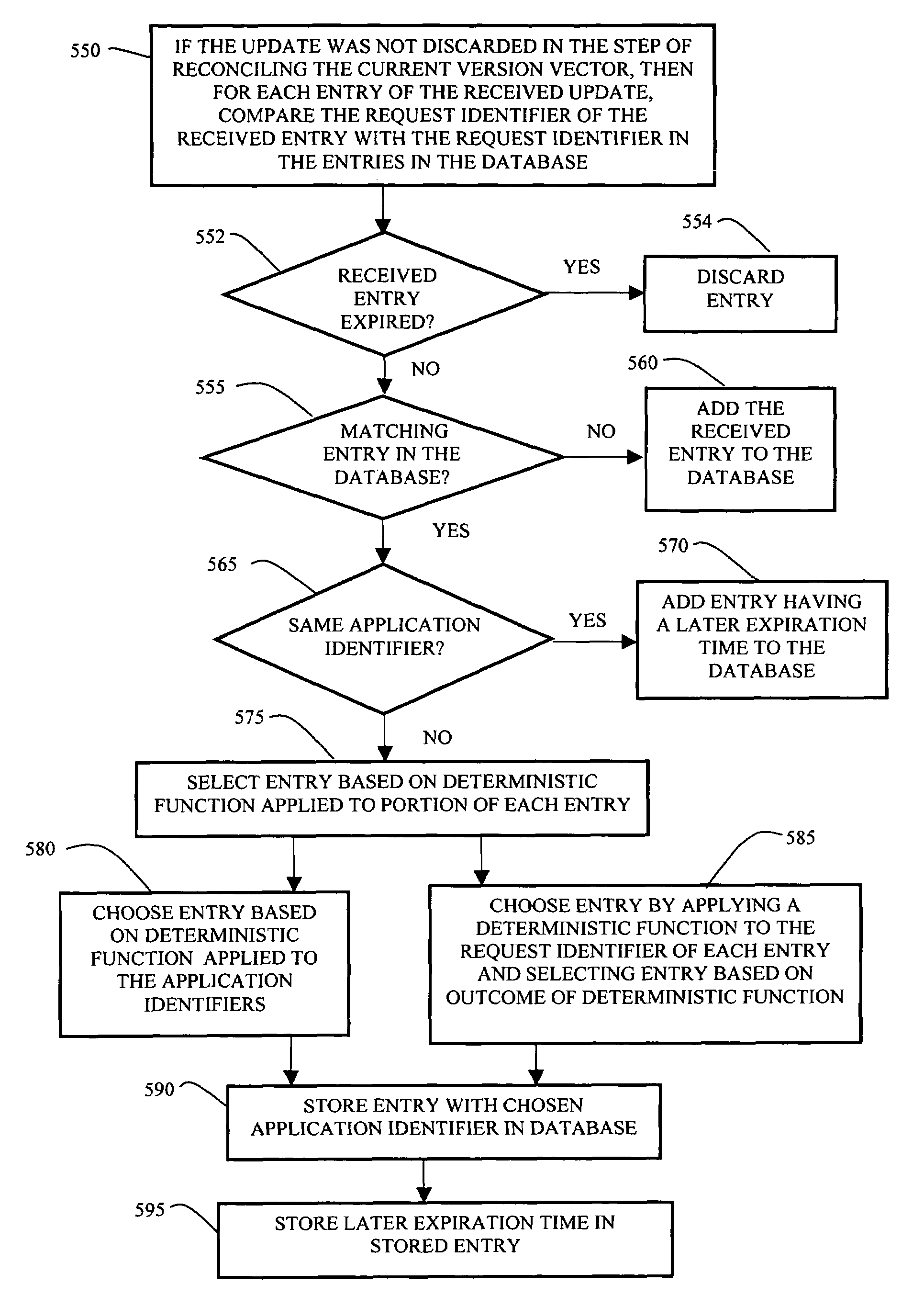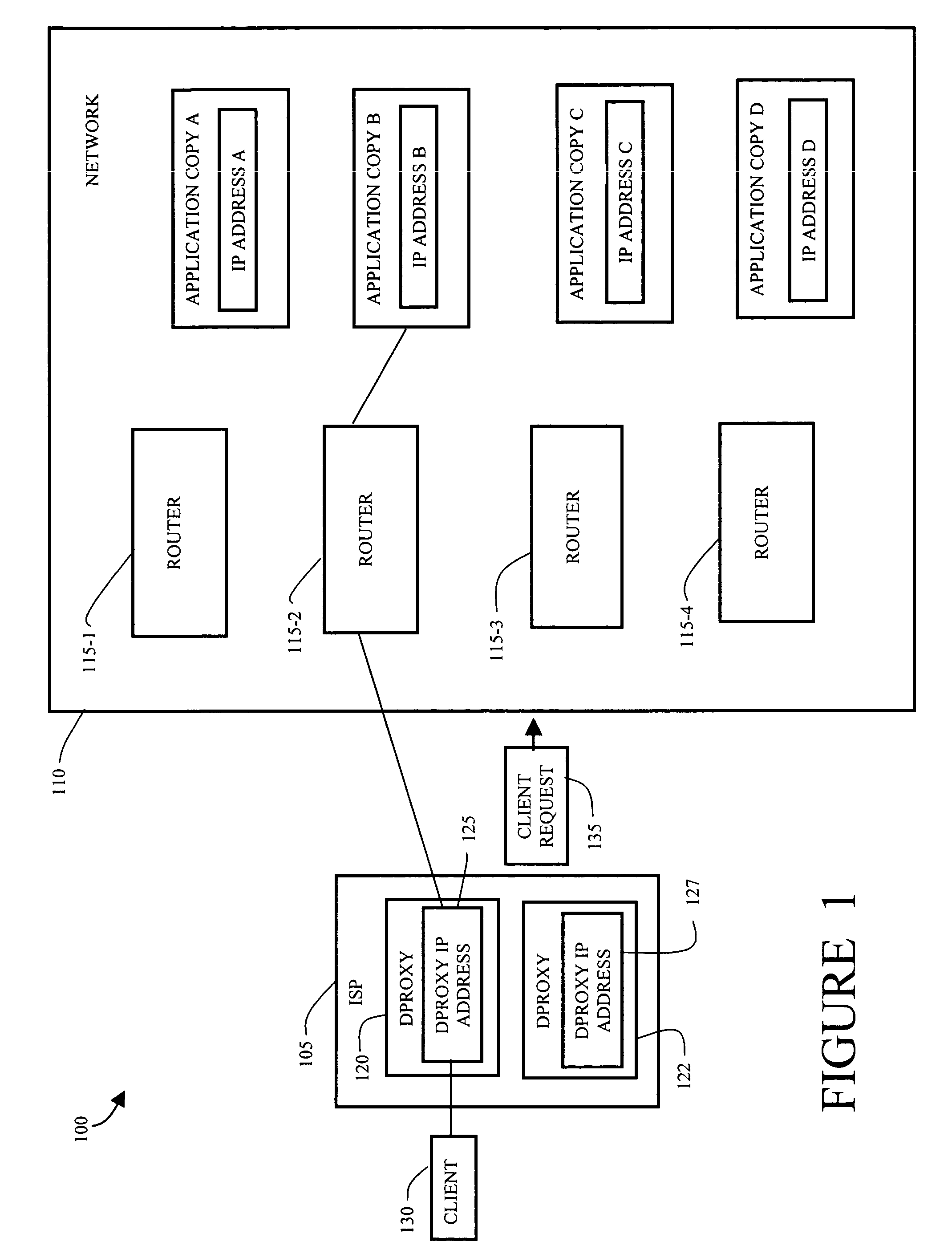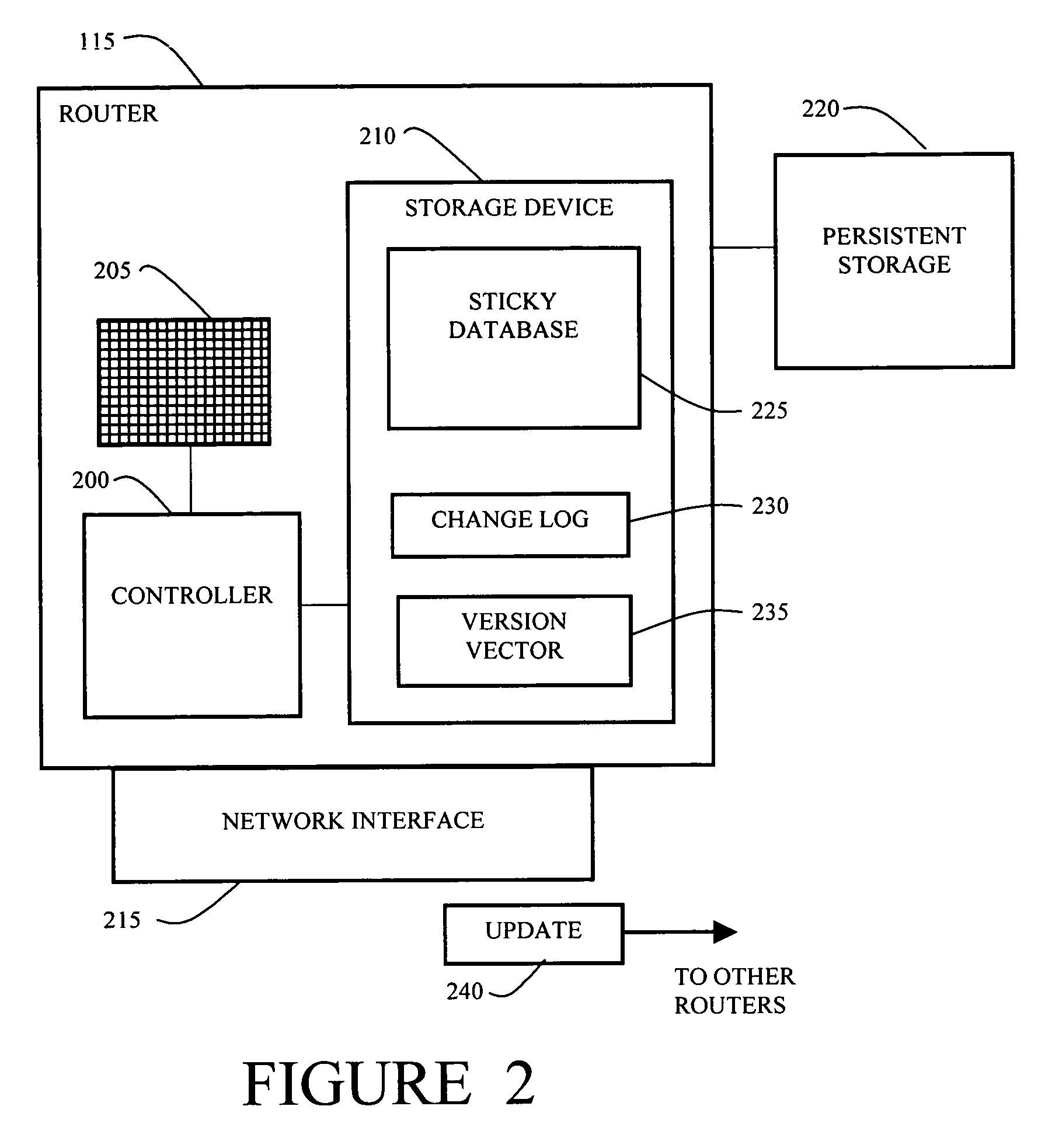Method and apparatus for providing sticky bindings using version vectors
a version vector and binding technology, applied in the field of methods and apparatus, can solve problems such as failure to maintain session state, inability to control client device code, and inconvenient replication of applications in a distributed computer environmen
- Summary
- Abstract
- Description
- Claims
- Application Information
AI Technical Summary
Benefits of technology
Problems solved by technology
Method used
Image
Examples
Embodiment Construction
[0036]Embodiments of the invention include a distributed computing environment having multiple routing nodes in which client sessions are maintained because bindings of DNS names to application copies are persistent. That is, successive client requests for an application receive a same application copy in response even if different routers in the environments handle the client requests. Each routing node has a “sticky” database that stores bindings of client requests to IP addresses of applications. With this database, a client receives a same IP address associated with an application copy in response to repeated requests for an application. The information in the database is shared among the routing nodes in the network so that the client device receives the same IP address no matter which routing node in the network handles the client request. The sharing of database information among routing nodes is accomplished through change logs and version vectors. Each routing node, in addi...
PUM
 Login to View More
Login to View More Abstract
Description
Claims
Application Information
 Login to View More
Login to View More - R&D
- Intellectual Property
- Life Sciences
- Materials
- Tech Scout
- Unparalleled Data Quality
- Higher Quality Content
- 60% Fewer Hallucinations
Browse by: Latest US Patents, China's latest patents, Technical Efficacy Thesaurus, Application Domain, Technology Topic, Popular Technical Reports.
© 2025 PatSnap. All rights reserved.Legal|Privacy policy|Modern Slavery Act Transparency Statement|Sitemap|About US| Contact US: help@patsnap.com



